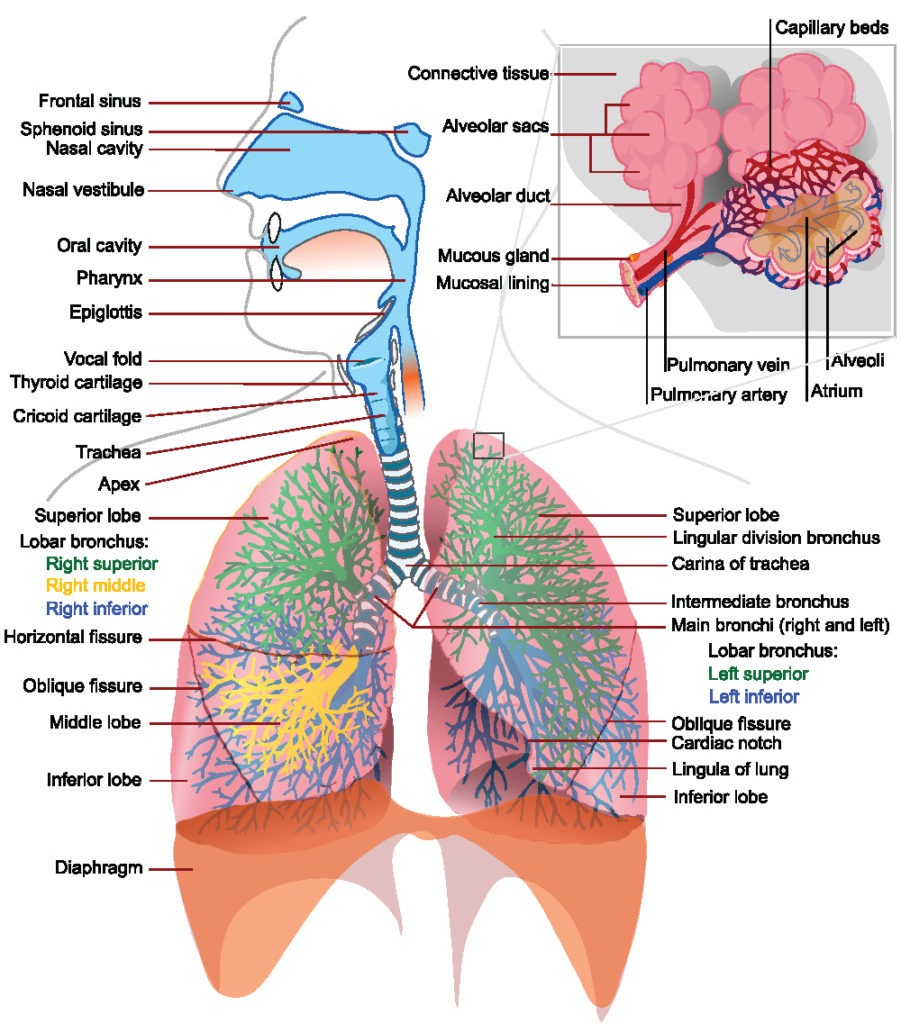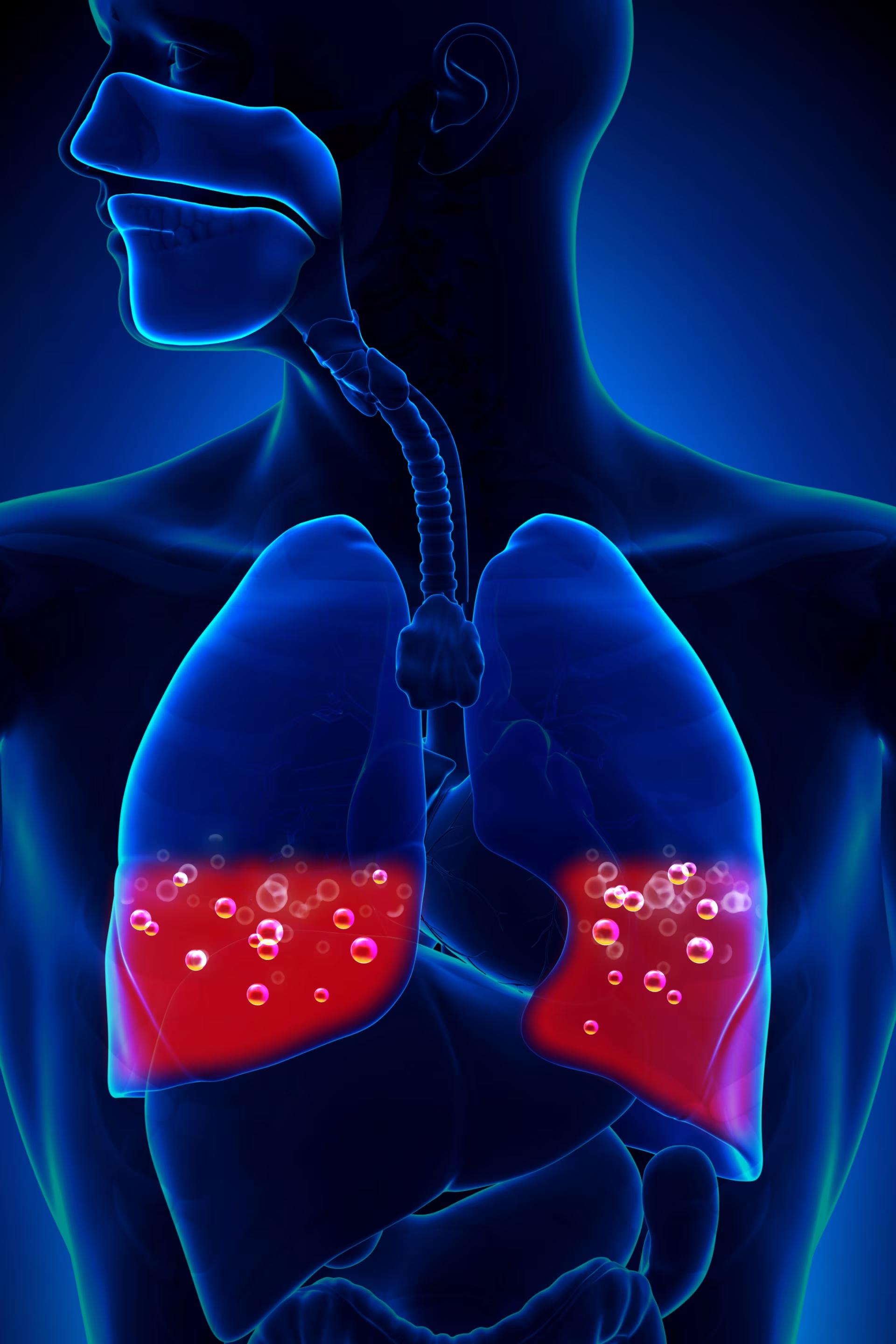

A number of occupational lung diseases can be caused by substances such as coal dust, asbestos fibres, and crystalline silica dust. Chronic obstructive pulmonary disease includes chronic bronchitis and emphysema, and can be related to smoking or exposure to harmful substances. The tissue of the lungs can be affected by a number of respiratory diseases, including pneumonia and lung cancer. The lungs have a unique blood supply, receiving deoxygenated blood from the heart in the pulmonary circulation for the purposes of receiving oxygen and releasing carbon dioxide, and a separate supply of oxygenated blood to the tissue of the lungs, in the bronchial circulation. The lobes are further divided into bronchopulmonary segments and pulmonary lobules. The right lung has three lobes and the left has two. The inner pleura also divides each lung into sections called lobes. Each lung is enclosed within a pleural sac of two membranes called pleurae the membranes are separated by a film of pleural fluid, which allows the inner and outer membranes to slide over each other whilst breathing takes place, without much friction. Together, the lungs contain approximately 2,400 kilometres (1,500 mi) of airways and 300 to 500 million alveoli. Alveoli are also sparsely present on the walls of the respiratory bronchioles and alveolar ducts.

These divide into the respiratory bronchioles of the respiratory zone which divide into alveolar ducts that give rise to the alveolar sacs that contain the alveoli, where gas exchange takes place. The conducting zone ends at the terminal bronchioles. The lungs are part of the lower respiratory tract that begins at the trachea and branches into the bronchi and bronchioles, and which receive air breathed in via the conducting zone. The lungs together weigh approximately 1.3 kilograms (2.9 lb), and the right is heavier. The right lung is bigger than the left, which shares space in the chest with the heart. They are situated within the thoracic cavity of the chest. Humans have two lungs, a right lung and a left lung. The lungs also provide airflow that makes vocal sounds including human speech possible. In humans, the main muscle of respiration that drives breathing is the diaphragm. In earlier tetrapods, air was driven into the lungs by the pharyngeal muscles via buccal pumping, a mechanism still seen in amphibians. Mammals, reptiles and birds use their different muscles to support and foster breathing. Respiration is driven by different muscular systems in different species.

Their function in the respiratory system is to extract oxygen from the air and transfer it into the bloodstream, and to release carbon dioxide from the bloodstream into the atmosphere, in a process of gas exchange. In mammals and most other vertebrates, two lungs are located near the backbone on either side of the heart. The lungs are the primary organs of the respiratory system in humans and most other animals, including some snails and a small number of fish.


 0 kommentar(er)
0 kommentar(er)
